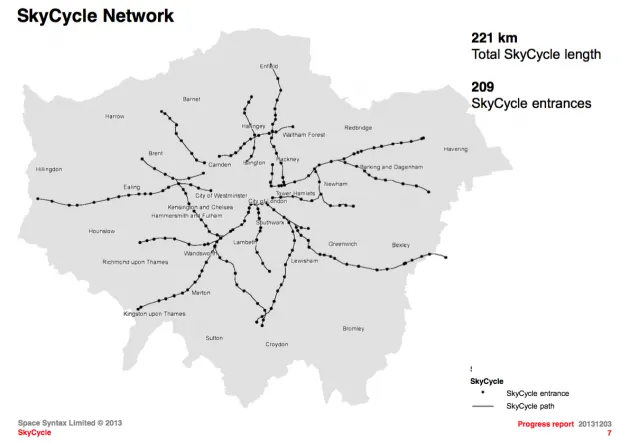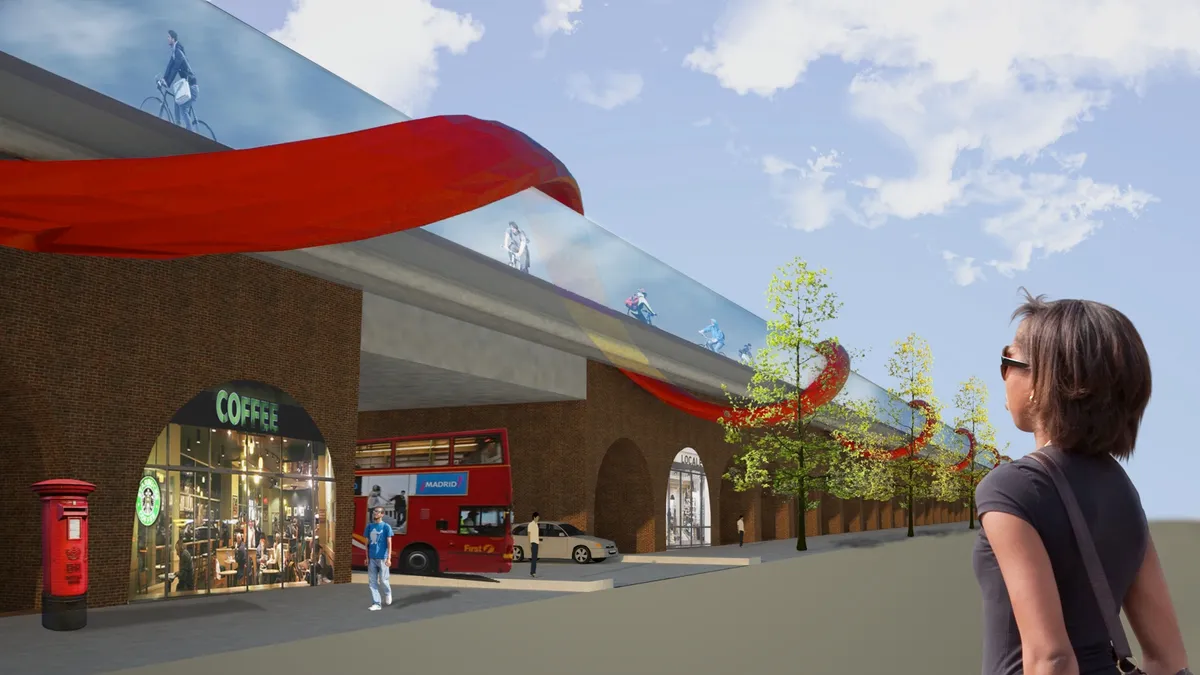Who remembers the Sky Cycle project that hit headlines a while back? It involved putting cycle lanes up in the sky above London's railway tracks, and was heralded as a brave new solution to the capital's transport congestion. With some big names like Norman Foster's architecture firm on board, it sounded like this incredible project might actually happen. Then things went a little quiet…
So we caught up with Sam Martin, a landscape architect who’s one of the key figures behind the project, to see what’s going on. "We’re waiting for and trying to establish some form of dialogue with developers and investors, who might wish to take a bit of a punt and research how it could be made into reality," says Martin.
"The time’s pretty good right now with a new mayor just appointed for London. I’m told he’s aware of the concept, and I know his feelings on housing and the affordability of the city are in line with what Sky Cycle is about, so it’s a reasonable time to start the conversation again with City Hall."
220km route

But let’s back up a bit – what would the network look like? How would it work? Well, after being allowed into the inner sanctum of Network Rail and looking at its plans and technical data, the partners behind it – Foster + Partners, Exterior Architecture and network analysts Space Syntax – have designed a 220km route that’s orbital around London, with 220 access points.
The clever bit is how people get onto the network: the access points would double up as residential developments, which is hoped to draw in private investors and property developers. Network Rail has already given its blessing to develop on land it owns for the project.
“If you could enable people to get around London under their own steam, you could make the city more affordable, and it would also create more housing,” says Martin.
“We’re building more and more offices in the centre of the city, we are turning more and more of the office space that’s outside zones one, two and three into residential spaces. So there’s lots more demand on the system to get people into the centre, which suggests that unless we build many, many new arteries, how are we going to get them in there?
Sky Cycle project: cost
The project is projected to cost around £8bn, which is around a third of what Crossrail 2 will cost at the latest projections. Martin believes that the Sky Cycle project would serve more people, connect more parts of London and deal with similar volumes of people across the entire network as Crossrail.
It would also bring lots of additional benefits, such as a lower environmental impact compared with Crossrail, and health benefits for users. "As citizens of this city and older citizens in the future, how do we wish to get about – by a myriad of tunnels and cramped trains, or by personal power above the city?"
Oh, and in case you’re wondering, the track wouldn’t be enclosed – if it’s raining, you’ll still get wet – but Martin says that the Sky Cycle track would be fully monitored and kept safe for users.
So what can BikeRadar readers in London do to move things along? Start by writing to the new Mayor of London, Sadiq Khan, and ask him to help make it happen, says Martin. And come along to Spin London, where Sam Martin will be discussing the Sky Cycle project, at London's Old Truman Brewery on 20-22 May. Tickets are available now, and BikeRadar readers get them half price. To take advantage of this special price, simply visit the link below.
